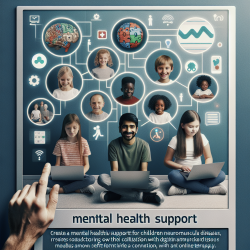Introduction
Stroke rehabilitation is a complex process that requires innovative approaches to enhance recovery. Recent research highlights the potential of High-Intensity Interval Training (HIIT) to improve neuroplasticity and cardiovascular health in individuals with chronic stroke. This blog will explore how practitioners can integrate these findings into their therapeutic practices, encouraging further research and application.
The Importance of Exercise Intensity
Exercise is a cornerstone of stroke rehabilitation, promoting neuroplasticity—the brain's ability to reorganize itself by forming new neural connections. However, the intensity of exercise plays a crucial role in maximizing these benefits. The study "Intensity matters: protocol for a randomized controlled trial exercise intervention for individuals with chronic stroke" emphasizes that higher intensity exercise, such as HIIT, can significantly enhance neuroplasticity compared to moderate-intensity continuous training (MICT).
Understanding HIIT and Its Benefits
HIIT involves short bursts of intense exercise followed by recovery periods. This method has been shown to increase corticospinal excitability, a marker of neuroplasticity, more effectively than MICT. The study demonstrated that participants engaging in HIIT showed greater improvements in motor function and cardiovascular health, suggesting that HIIT could be a more efficient method for stroke rehabilitation.
Implementing HIIT in Stroke Rehabilitation
For practitioners, integrating HIIT into rehabilitation programs requires careful consideration of each patient's capabilities and limitations. Here are some steps to consider:
- Assessment: Evaluate the patient's current physical condition and readiness for high-intensity exercise.
- Customization: Tailor the HIIT program to the individual's needs, starting with lower intensity and gradually increasing as tolerated.
- Monitoring: Continuously monitor the patient's response to exercise, adjusting intensity and duration as needed.
- Safety: Ensure that all exercises are performed safely, with proper supervision and equipment.
Encouraging Further Research
While the benefits of HIIT in stroke rehabilitation are promising, further research is needed to fully understand its long-term effects and optimal implementation strategies. Practitioners are encouraged to contribute to this body of knowledge by documenting their experiences and outcomes with HIIT in clinical settings.
Conclusion
Integrating HIIT into stroke rehabilitation programs offers a promising avenue for enhancing recovery outcomes. By focusing on exercise intensity, practitioners can better support neuroplasticity and cardiovascular health in their patients. As the field continues to evolve, ongoing research and collaboration will be key to unlocking the full potential of HIIT in stroke rehabilitation.
To read the original research paper, please follow this link: Intensity matters: protocol for a randomized controlled trial exercise intervention for individuals with chronic stroke.










